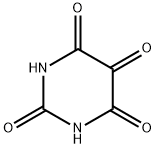1,4-Cyclohexanedione bis(ethylene ketal)
Synonym(s):1,4,9,12-Tetraoxadispiro[4.2.4.2]tetradecane
- CAS NO.:183-97-1
- Empirical Formula: C10H16O4
- Molecular Weight: 200.23
- MDL number: MFCD00010851
- SAFETY DATA SHEET (SDS)
- Update Date: 2025-01-27 09:38:02

What is 1,4-Cyclohexanedione bis(ethylene ketal)?
General Description
Hydrolysis of 1,4-cyclohexanedione bis(ethylene ketal) at 250°C has been reported.
Synthesis
After mixing 2243 g (20 mol) of 1,4-cyclohexanedione, 2607 g (42 mol) of ethylene glycol, the resin filtered, and 26 L of toluene, the temperature was raised slowly and refluxed for 11 hours to separate the water. The reaction temperature was lowered to 40° C., the resin was filtered, and the organic phase was concentrated until no liquid flowed. Then add 1257g (21mol) of methylboronic acid and 20L of n-heptane, raise the temperature to 80°C and react for 6 hours, then slowly cool down to 5-10°C in a gradient, filter, rinse the filter cake with n-heptane, and dry to obtain 1,4-Cyclohexanedione bis(ethylene ketal).
Properties of 1,4-Cyclohexanedione bis(ethylene ketal)
| Melting point: | 79-80 °C (lit.) |
| Boiling point: | 75-85 °C/0.5 mmHg (lit.) |
| Density | 1.1508 (rough estimate) |
| refractive index | 1.4459 (estimate) |
| Flash point: | 75-85°C/0.5mm |
| storage temp. | Store below +30°C. |
| form | powder to crystal |
| color | White to Almost white |
| InChI | InChI=1S/C10H16O4/c1-2-10(13-7-8-14-10)4-3-9(1)11-5-6-12-9/h1-8H2 |
| CAS DataBase Reference | 183-97-1(CAS DataBase Reference) |
| NIST Chemistry Reference | 1,4-Cyclohexanedione bis(ethylene ketal)(183-97-1) |
Safety information for 1,4-Cyclohexanedione bis(ethylene ketal)
| Signal word | Warning |
| Pictogram(s) |
 Exclamation Mark Irritant GHS07 |
| GHS Hazard Statements |
H315:Skin corrosion/irritation H319:Serious eye damage/eye irritation H335:Specific target organ toxicity, single exposure;Respiratory tract irritation |
| Precautionary Statement Codes |
P261:Avoid breathing dust/fume/gas/mist/vapours/spray. P264:Wash hands thoroughly after handling. P264:Wash skin thouroughly after handling. P271:Use only outdoors or in a well-ventilated area. P280:Wear protective gloves/protective clothing/eye protection/face protection. P302+P352:IF ON SKIN: wash with plenty of soap and water. P305+P351+P338:IF IN EYES: Rinse cautiously with water for several minutes. Remove contact lenses, if present and easy to do. Continuerinsing. |
Computed Descriptors for 1,4-Cyclohexanedione bis(ethylene ketal)
| InChIKey | YSMVSEYPOBXSOK-UHFFFAOYSA-N |
| SMILES | O1C2(CCC3(OCCO3)CC2)OCC1 |
New Products
4,4-Difluoropiperidine hydrochloride tert-butyl 9-methoxy-3-azaspiro[5.5]undecane-3-carboxylate Indole Methyl Resin N-Isopropylurea N,N-Dicyclohexylcarbodiimide(DCC) MELDRUMS ACID 5-METHYLISOXAZOLE-4-CARBOXYLIC ACID Magnessium Bis glycinate Zinc ascorbate 1-bromo-2-butyne 2-acetamidophenol 9(10H)-anthracenone Erythrosin B, 4-Piperidinopiperidine 2-((4-morpholinophenylamino) (methylthio) methylene) malononitrile 2,4-dihydroxybenzaldehyde 3-(4-morpholinophenylamino)-5-amino-1H-pyrazole-4-carbonitrile Methyl 2-methylquinoline-6-carboxylate 2,6-dichloro-4-nitropyridine 4-Bromo-2-chlorobenzonitrile 2-(benzylamino)acetic acid hydrochloride 4-(tert-Butoxycarbonylamino)but- 2-ynoic acid 3,4-dihydro-2H-benzo[b][1,4]dioxepine 1-Phenyl-1-cycloprppanecarboxylicacidRelated products of tetrahydrofuran








You may like
-
 1,4-Cyclohexanedione Bis(ethyleneketal) CAS 183-97-1View Details
1,4-Cyclohexanedione Bis(ethyleneketal) CAS 183-97-1View Details
183-97-1 -
 3-(4-amino-1-oxoisoindolin-2-yl)-1-methylpiperidine-2,6-dione 98%View Details
3-(4-amino-1-oxoisoindolin-2-yl)-1-methylpiperidine-2,6-dione 98%View Details -
 614-19-7 98%View Details
614-19-7 98%View Details
614-19-7 -
 3112-85-4 Methyl phenyl sulfone 98%View Details
3112-85-4 Methyl phenyl sulfone 98%View Details
3112-85-4 -
 20677-73-0 (2,2-diethoxyethyl)methylamine 98%View Details
20677-73-0 (2,2-diethoxyethyl)methylamine 98%View Details
20677-73-0 -
 3-(4-(hydroxyamino)-1-oxoisoindolin-2-yl)piperidine-2,6-dione 98%View Details
3-(4-(hydroxyamino)-1-oxoisoindolin-2-yl)piperidine-2,6-dione 98%View Details -
 57381-49-4 2-bromo-4-chlorobenzonitrile 98%View Details
57381-49-4 2-bromo-4-chlorobenzonitrile 98%View Details
57381-49-4 -
 4,6-dichloropyrimidine-5-carbaldehyde 98%View Details
4,6-dichloropyrimidine-5-carbaldehyde 98%View Details
5305-40-8
Statement: All products displayed on this website are only used for non medical purposes such as industrial applications or scientific research, and cannot be used for clinical diagnosis or treatment of humans or animals. They are not medicinal or edible.
